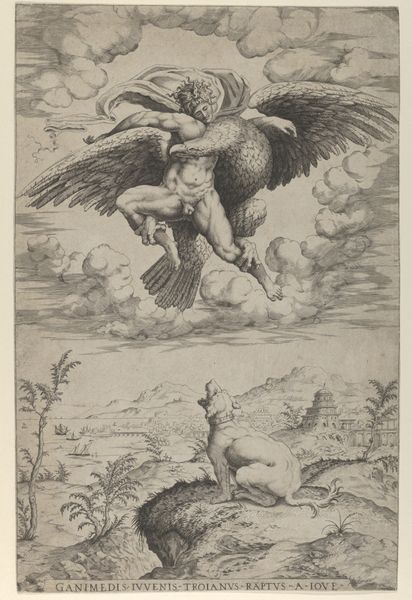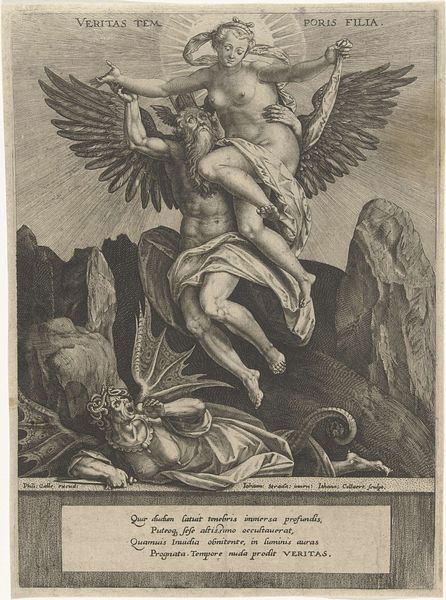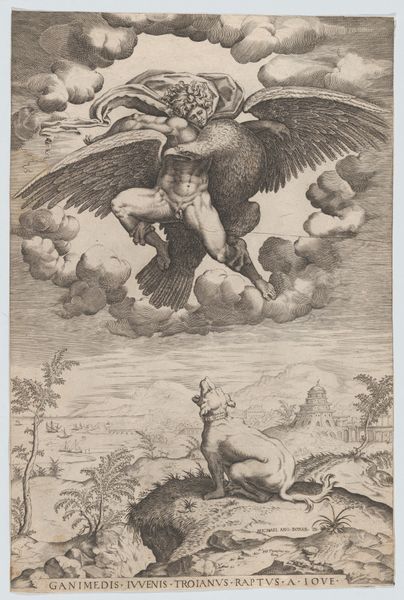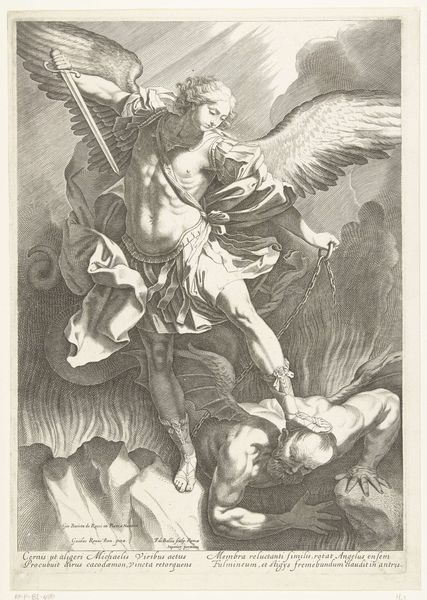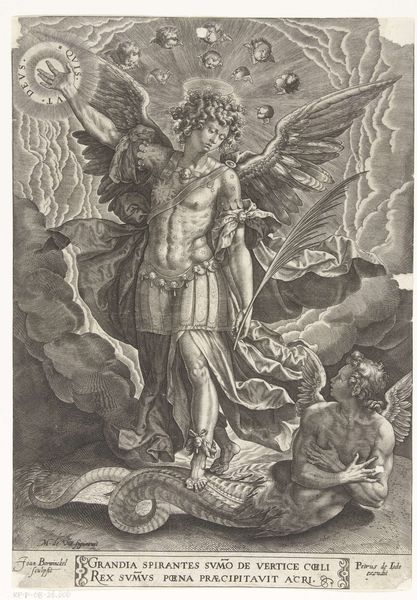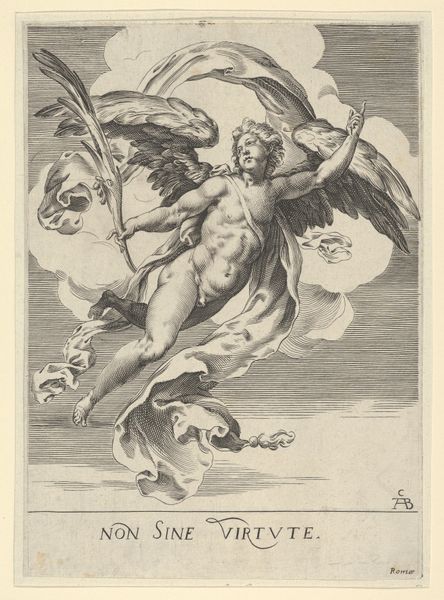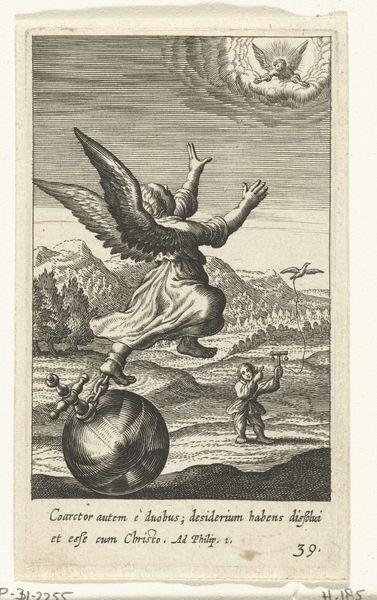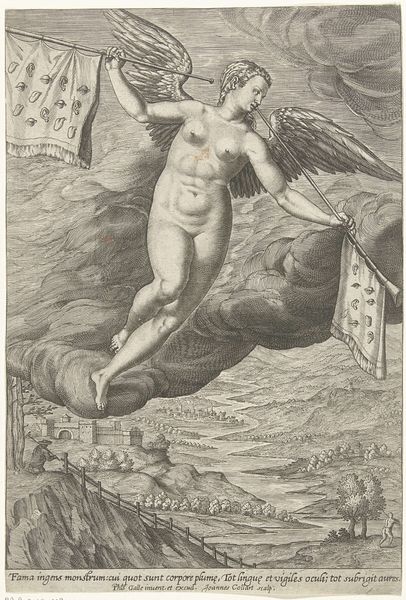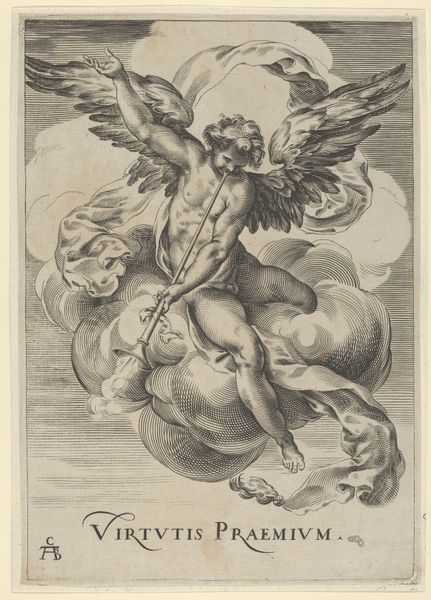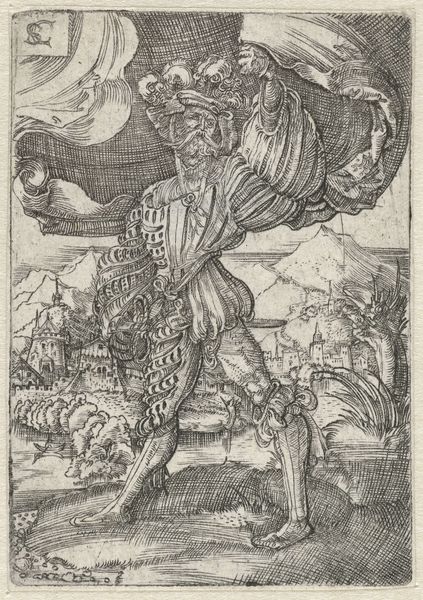
Dimensions: height 327 mm, width 230 mm
Copyright: Rijks Museum: Open Domain
This is Albrecht Durer's engraving Nemesis, made sometime around 1502 in Nuremberg, Germany. At its heart, the image is about earthly power. Nemesis, the Greek goddess of retribution, floats over a detailed landscape of a small town. She balances precariously on a sphere, signifying the instability of fortune. Durer was working in a time of massive political and economic change. The old feudal order was declining and a new merchant class was rising in power. The winged Nemesis holds a goblet, a symbol of wealth, and a bridle, representing control. The message seems to be that wealth and control are fleeting. To better understand this image, you can explore sources on the Renaissance economy, studies of Nuremberg's urban development, and interpretations of classical mythology. The true meaning of art lies not just in aesthetic appreciation, but in understanding the artwork within its complex social and institutional context.
Comments
No comments
Be the first to comment and join the conversation on the ultimate creative platform.
